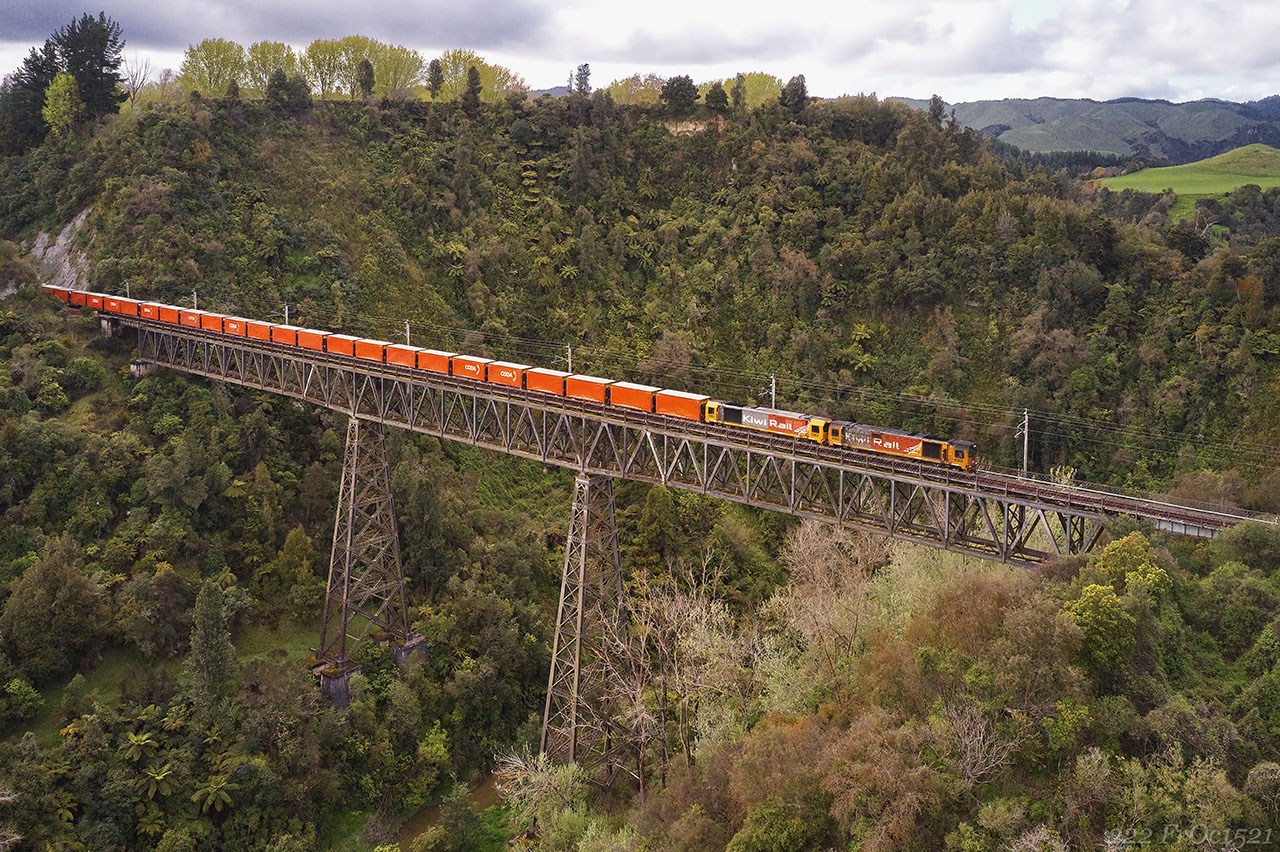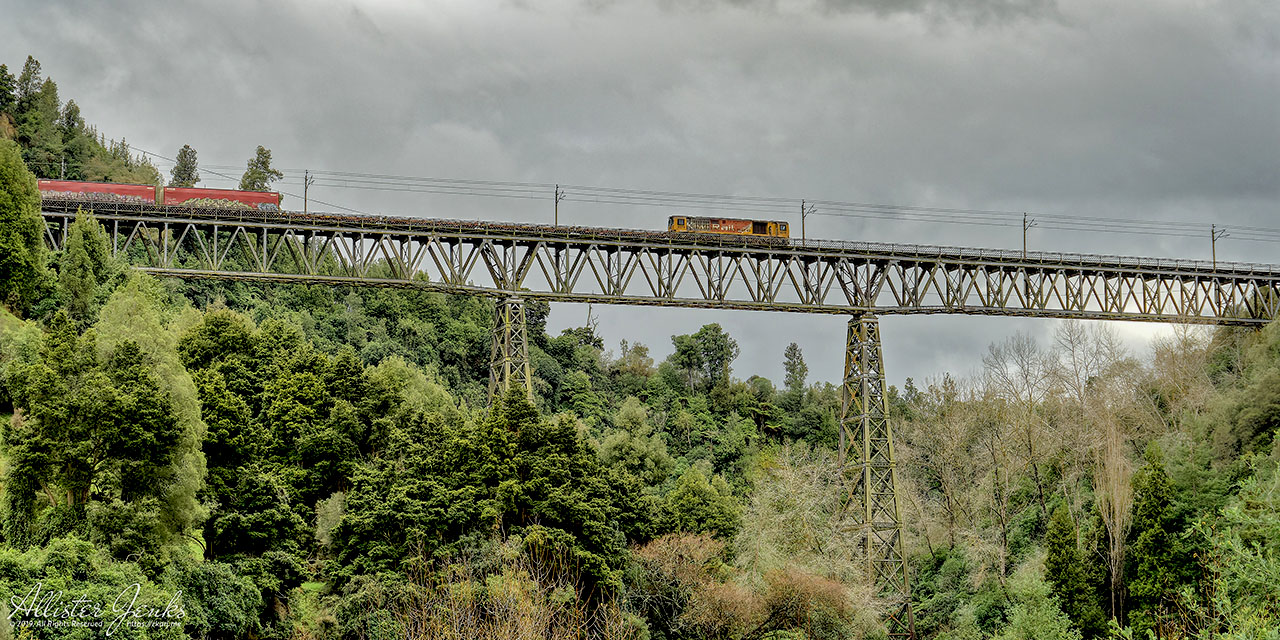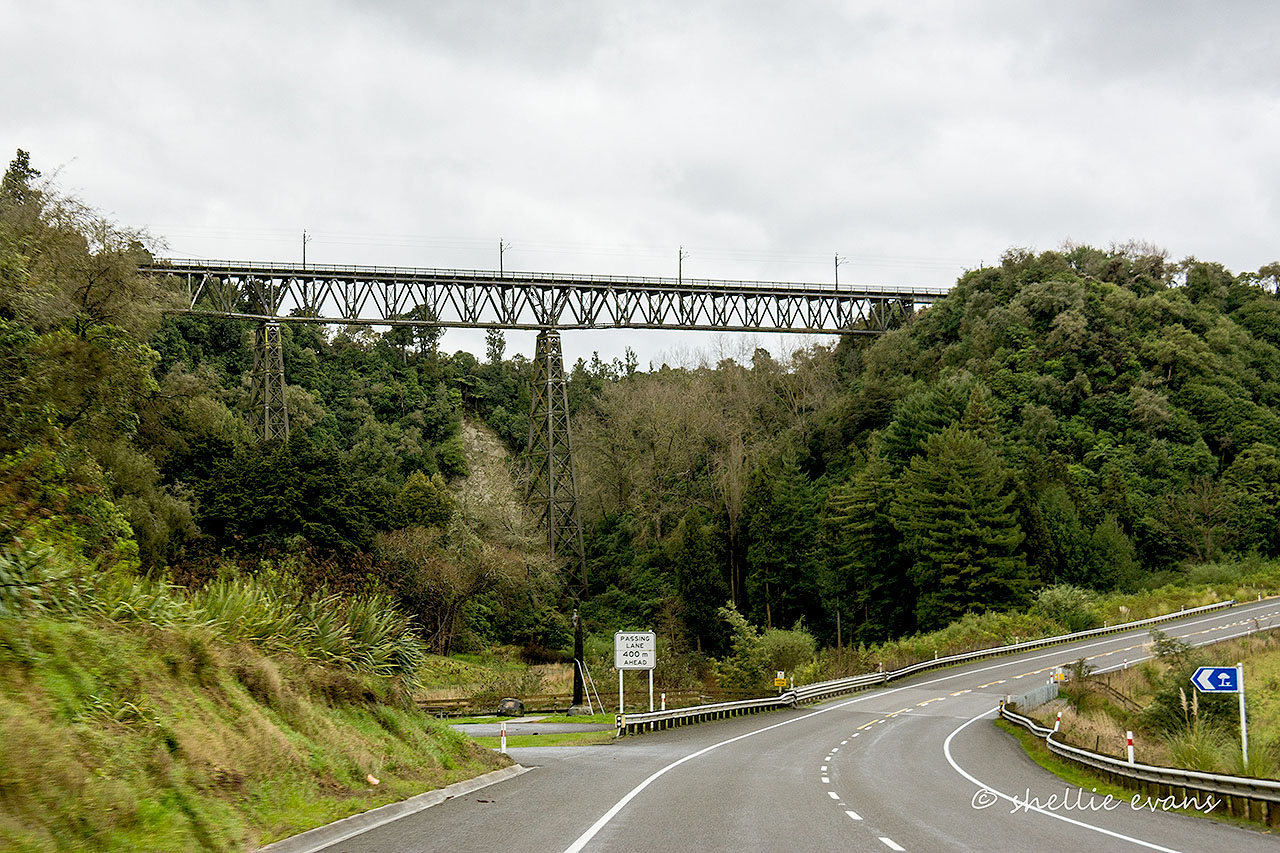The Makohine Railway Viaduct, completed in 1902, was an impressive engineering milestone in the construction of the North Island Main Trunk line. The construction of a railway line connecting Wellington with Auckland was first proposed by the Vogel government in 1870; but it was another decade before relations between the Crown and Waikato Maori had improved sufficiently for planning for the line to proceed. By 1884 the House of Representatives approved the route of the railway and the first sods were turned on 15 April 1885. Work began at each end of the Island with the intention of meeting in the middle. Progress was slow, subject to the difficulties of the terrain and the vagaries of changing governments. By 1887 the line had progressed as far south as Te Kuiti and as far north as Marton. The remaining section to be completed crossed difficult terrain which necessitated the construction of a number of tunnels and viaducts. Plans for the viaduct at Makohine, begun in 1893, were prepared by the resident engineer Public Works Department, Peter Seton Hay (1852/53-1907). Hay also designed the Mangaweka, Hapuawhenua, Taonui, Manganui-a-te-ao and Makatote viaducts. Unable to obtain a satisfactorily low tender for the structure it was decided that the viaduct would be built primarily by the Public Works Department. Work was well under way by 1897, but the weather and delays in the delivery of the prefabricated steel from England hampered progress. The viaduct was finished in June 1902 and was officially opened by Minister for Public Works, William Hall Jones, in the same month. The last spike was driven on the Main Trunk line at Manganui-a-te-ao on 6 November 1908. The Makohine Railway Viaduct is a most significant example of New Zealand engineering heritage. At the time of its construction it was the second highest viaduct in New Zealand, and today is still ranked the seventh highest and fourth longest viaduct on the North Island Main Trunk line. Its completion overcame one of the major natural obstacles that stood in the way of what is now the busiest and most important railway line in New Zealand. It was designed by one of the great engineers in the history of the Public Works Department. The viaduct is one of the best-known of all railway structures adjoining State Highway 1 in the North Island.




Location
List Entry Information
Overview
Detailed List Entry
Status
Listed
List Entry Status
Historic Place Category 1
Access
Private/No Public Access
List Number
32
Date Entered
4th April 1985
Date of Effect
4th April 1985
City/District Council
Rangitīkei District
Region
Horizons (Manawatū-Whanganui) Region
Legal description
Rway No 44048 LP 1158 Makohine Viaduct NIMT Blk16 Tiriraukawa
Location Description
The viaduct can be viewed from below at the State Highway 1 (SH1) rest stop which abuts the Makohine Reserve.
Related listings
Stay up to date with Heritage this month
